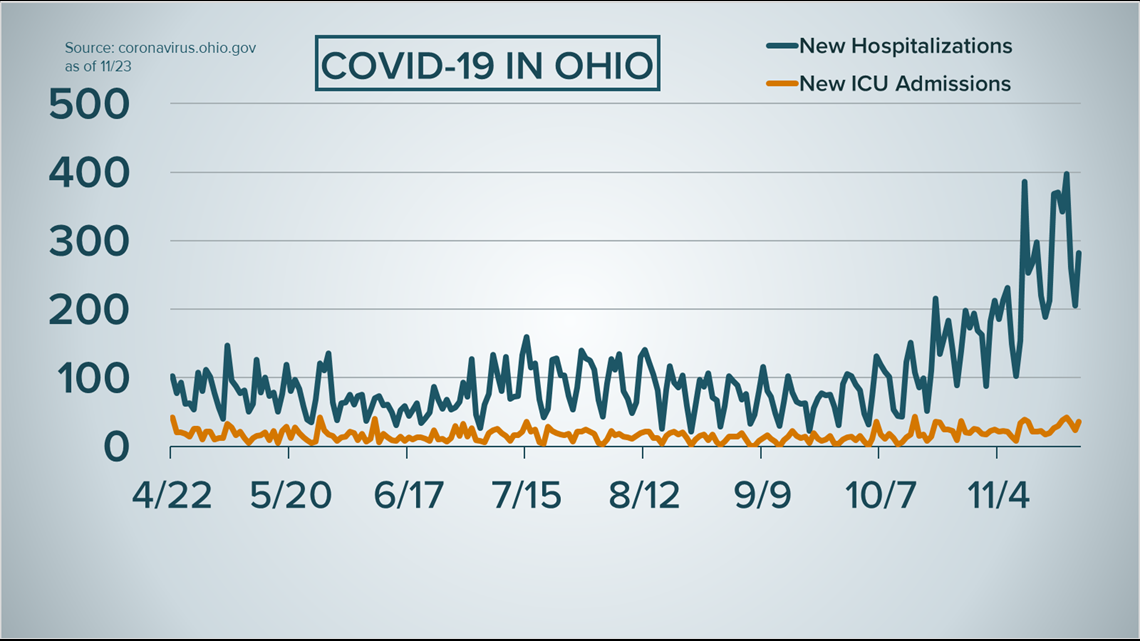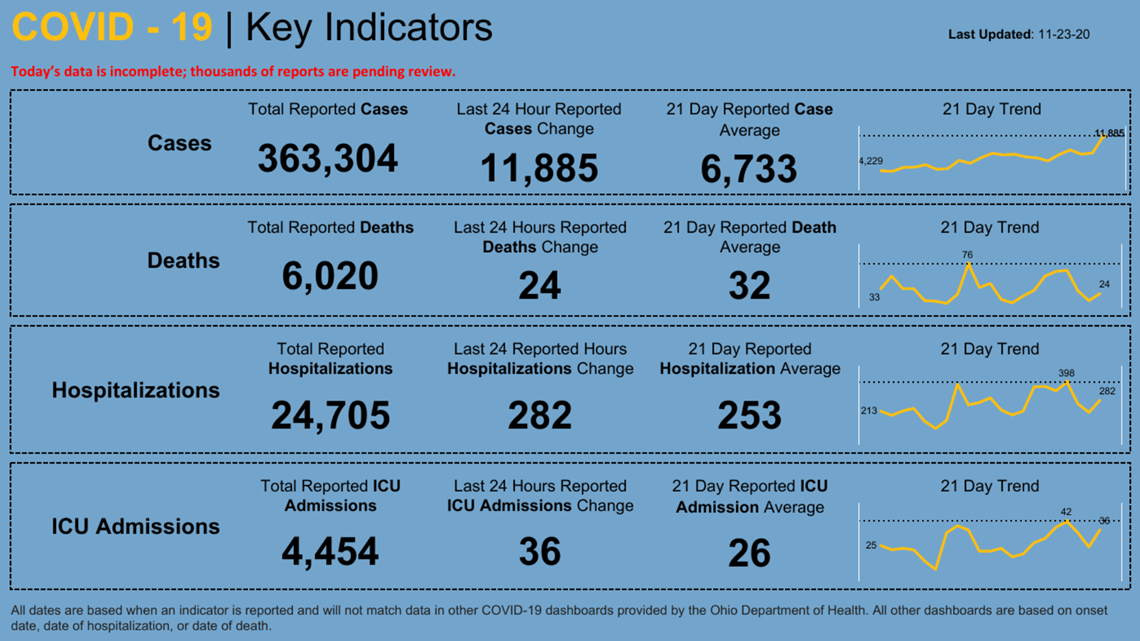COLUMBUS, Ohio — Gov. Mike DeWine was joined by leaders with the Ohio Hospital Association Monday afternoon, addressing the strain put on state hospitals due to surging COVID-19 cases.
Included in Monday's conference were:
- Robert Wyllie, MD, Cleveland Clinic
- Andrew Thomas, MD, MBA, The Ohio State University Wexner Medical Center
- Richard Lofgren, MD, MPH, FACP, president and CEO of UC Health
- Ronda Lehman, Pharm D, MBA, FACHE, president of Mercy Health
DeWine said there were 4,358 COVID-19 patients in Ohio's hospitals, which is a 59% increase from two weeks ago. Back on Sept. 23, there were just 600 in the state's hospitals. There are currently 1,079 people in the ICU due to COVID-19, the highest number the state's seen so far.


Dr. Robert Wyllie with the Cleveland Clinic covers the northern zone of the state (Zone 1), including everything from Youngstown all the way to Toledo. He said that his teams are starting to be stretched thin.
On Friday, for the first time, he said they had to transfer ventilators because hospitals were running out.
Currently, there are 970 caregivers out in the Cleveland Clinic system alone, after contracting or being exposed to COVID-19.
Wyllie said these caregivers are not getting sick in the hospital, they are catching it out in the community.
"When you have 970 caregivers plus out, that means it is starting to affect our ability to care for patients," he said.
Wyllie explained that this is the highest number of staff out that they have seen since the onset of the pandemic.
To accommodate, they have had to eliminate some services. A few weeks ago, they were forced to cancel in-patient elective surgeries, taking staff who would have been in charge of those procedures and putting them back into the hospitals and ICUs.
Dr. Andy Thomas with the Ohio State University Wexner Medical Center said that now is the time for Ohioans to change their behavior.
"In the next few weeks, every hospital in the state is going to have to make tough decisions about how it will staff its beds, what elective procedures they'll have to postpone, even potentially postponing ambulatory and outpatient office visits," he said.
Hospital systems have thus far been able to accommodate patients between others throughout the region, but Dr. Richard Lofgren with UC Health said they are reaching a point where it will start to impact non-COVID-19 patients.
"The growth in hospitalizations exponential. We're not planning for the surge - the surge is here. We're approaching the point where the influx of COVID patients will displace non-COVID care," he said.
In that same token, the patients who are going into the hospital are staying there for meaningful periods of time, while higher numbers of individuals are still getting admitted on a daily basis.
"The inpatient side is filling up faster than we're able to discharge patients," Rhonda Lehman with Mercy Health said.
DeWine repeated his refrain of "personal responsibility," calling on Ohioans to take ownership of what they do in their every day lives.
"We can turn around the increasing trend of cases and hospitalizations. The most important thing is what individuals do in their own lives. It comes down to personal responsibility," he said.
Here is the data reported by the ODH on Monday:
- 11,885 new cases compared to the 21-day average of 6,733
- 24 new deaths compared to the 21-day average of 32
- 282 new hospitalizations compared to the 21-day average of 253
- 36 new ICU admissions compared to the 21-day average of 26


Important to note, however, is the fact that the high jump in cases on Monday is caused in part due to the technical problems experienced by two labs for the last 48 hours. But at the same time, there are still a large number of antigen tests still pending.
DeWine is expected to provide an update on his administration's response to the virus Tuesday at 2 p.m.

